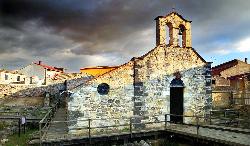Skip navigation bar and go to contents
Vivere la campagna
 Agricoltura
Agricoltura
 Ambiente
Ambiente
 Bilancio e Patrimonio
Bilancio e Patrimonio
 Consigliera di Parità
Consigliera di Parità
 Cultura
Cultura
 Formazione Professionale
Formazione Professionale
 Immigrazione/Emigrazione
Immigrazione/Emigrazione
 Innovazione Tecnologica
Innovazione Tecnologica
 Lavori pubblici e Viabilità
Lavori pubblici e Viabilità
 Lavoro
Lavoro
 Personale
Personale
 Pianificazione Territoriale
Pianificazione Territoriale
 Politiche giovanili
Politiche giovanili
 Politiche Sociali
Politiche Sociali
 Protezione civile
Protezione civile
 Pubblica Istruzione
Pubblica Istruzione
 Sport
Sport
 SUAP
SUAP
 Trasporti
Trasporti
 Turismo
Turismo
 URP
URP

The provincial area of Middle Campidano is scattered with noteworthy religious buildings dating from different ages. They show a variety of architectural styles, from Romanesque to Gothic-Aragonese, from Baroque to Renaissance. A number of shrines have been guarding valuable works of art in their interiors, such as most precious retables, polychrome marble altars, ancient pipe organs, wooden statues, frescoes etc. Rural churches are of special interest, being often immersed in evocative natural settings also making the background to festivals, fairs and religious events, alternating throughout the year in a rich calendar of highlights. In the old centres, squares of medieval layouts and scenic views host gems of sacred architecture, expressing Sardinian people’s deep sense of religion through their stylistic features.
A visit to the churches, either in old centres and in rural sites, will disclose a simply-natured piety, closely related to the traditional agro-pastoral civilization that, still today, interchanges daily activities with intense proofs of faith.
 Setzu churches
Setzu churches Siddi churches
Siddi churches Tuili churches
Tuili churches Turri, Parish church of San Sebastiano
Turri, Parish church of San Sebastiano Ussaramanna churches
Ussaramanna churches Villacidro churches
Villacidro churches Villamar churches
Villamar churches Villanovaforru churches
Villanovaforru churches Villanovafranca churches
Villanovafranca churches